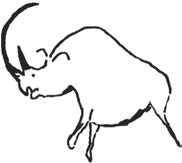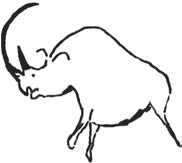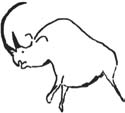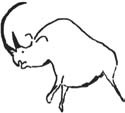The Dawn of Human Culture




THE DAWN OF
HUMAN CULTURE
Richard G. Klein with Blake Edgar
A PETER N. NEVRAUMONT BOOK
John Wiley & Sons, Inc.
00 Dawn Front Matter.r.qxd 1/29/02 5:02 PM Page 2
00 Dawn Front Matter.r.qxd 1/29/02 5:02 PM Page 1
THE DAWN OF
HUMAN CULTURE
*
*
*
00 Dawn Front Matter.r.qxd 1/29/02 5:02 PM Page 2


00 Dawn Front Matter.r.qxd 1/29/02 5:02 PM Page 3
THE DAWN OF
HUMAN CULTURE
Richard G. Klein with Blake Edgar
A PETER N. NEVRAUMONT BOOK
John Wiley & Sons, Inc.
00 Dawn Front Matter.r.qxd 02/08/2002 2:59 PM Page 4
This book is printed on acid-free paper. ࠗ
ϱ
Copyright © 2002 by Richard G. Klein and Blake Edgar. All rights reserved Figures 2.2, 2.9, 2.10, 4.2, 4.9, 5.2, 5.3, 6.1, 7.3, 7.4, 7.6, 7.12, and 8.3 are copyright © 2002 by Kathryn Cruz-Uribe. All other figures are copyright
© 2002 by Richard G. Klein.
Published by John Wiley & Sons, Inc., New York
Published simultaneously in Canada
No part of this publication may be reproduced, stored in a retrieval system, or transmit-ted in any form or by any means, electronic, mechanical, photocopying, recording, scan-ning, or otherwise, except as permitted under Section 107 or 108 of the 1976 United States Copyright Act, without either the prior written permission of the Publisher, or authorization through payment of the appropriate per-copy fee to the Copyright Clearance Center, 222 Rosewood Drive, Danvers, MA 01923, (978) 750-8400, fax (978) 750-4744. Requests to the Publisher for permission should be addressed to the Permissions Department, John Wiley & Sons, Inc., 605 Third Avenue, New York, NY
10158-0012, (212) 850-6011, fax (212) 850-6008, email: [email protected].
This publication is designed to provide accurate and authoritative information in regard to the subject matter covered. It is sold with the understanding that the publisher is not engaged in rendering professional services. If professional advice or other expert assistance is required, the services of a competent professional person should be sought.
ISBN 0-471-25252-2
CREATED AND PRODUCED BY
NEVRAUMONT PUBLISHING COMPANY
NEW YORK, NEW YORK
Ann J. Perrini, President
Book design: Frances White
Printed in the United States of America
10 9 8 7 6 5 4 3 2 1
Contents
* * *
CHAPTER 1
Dawn at Twilight Cave 11
CHAPTER 2
Bipedal Apes 29
CHAPTER 3
The World’s Oldest Whodunit 63
CHAPTER 4
The First True Humans 91
CHAPTER 5
Humanity Branches Out 133
CHAPTER 6
Neanderthals Out on a Limb 169
CHAPTER 7
Body Before Behavior 217
CHAPTER 8
Nurture or Nature Before the Dawn? 257
APPENDIX
Placing Ancient Sites in Time 274
SELECTED FURTHER READING 278
INDEX 284
* * *

PREFACE
Human beings are naturally interested in their origins, and every culture has devised its own account. Most such explanations center on supernatural creators, and their acceptance is entirely a matter of faith. Science, however, has produced a different kind of narra-tive that can be tested, even rejected, with testimony from the ground, or, increasingly, from within the human genome.
The scientific evidence for human evolution has been accumulating for more than 150 years, and much has been added in just the past decade. The sum now allows a broad outline that is likely to stand the test of time. Thus, we can say with reasonable certainty that humans, defined by their habit of walking bipedally, evolved about 6
million years ago from an African ape; that multiple bipedal species appeared between 6 million and 2.5 million years ago; that all these early bipeds remained remarkably ape-like in brain size and upper body form; that some human species, perhaps the first whose brain 8
| THE DAWN OF HUMAN CULTURE
exceeded that of an ape in size, invented stone flaking about 2.5 million years ago; that the earliest stone tool makers used their tools to add animal flesh and marrow to a mainly vegetarian diet; that people first spread from Africa to Eurasia sometime after 2 million years ago; that humans had begun to diverge into different physical types on different continents by 1 million years ago; that the modern human type evolved exclusively in Africa; and finally, that modern Africans expanded to Eurasia about 50,000 years ago where they swamped or replaced the Neanderthals and other non-modern Eurasians. We show here how fossils, artifacts, and genes underpin these conclusions and especially how they document the African origin of modern humanity.
Archeology links the expansion of modern humans to their highly evolved ability to invent tools, social forms, and ideas, in short, to their fully modern capacity for culture. We suggest that this capacity stemmed from a genetic change that promoted the fully modern brain in Africa around 50,000 years ago. However, the evidence for a genetic change is circumstantial, and our more fundamental point is that the spread of modern humanity is tied to the dawn of culture as we know it. Arguably, the “dawn” was the most significant prehistoric event that archeologists will ever detect. Before it, human anatomical and behavioral change proceeded very slowly, more or less hand-in-hand. Afterwards, the human form remained remarkably stable, while behavioral change accelerated dramatically. In the space of less than 40,000 years, ever more closely packed cultural “revolutions” have taken humanity from the status of a relatively rare large mammal to something more like a geologic force.
Fossils and artifacts provide the hard evidence for human evolution, but they would be of little use if they could not be ordered in Preface | 9
time. Recent advances in our understanding of human evolution owe as much to methods of dating as they do to new fossil and archeological discoveries. We have therefore described the principal dating methods in the text. Since the descriptions are scattered, we have summarized them in an appendix that refers back to the more detailed descriptions in previous chapters.
Peter N. Nevraumont conceived this book, based on Richard G.
Klein’s more technical writing on human evolution. Blake Edgar produced an initial draft, which Klein rewrote to provide the present version. Jim Bischoff, Frank Brown, David deGusta, Jim O’Connell, Kathryn Cruz-Uribe, Don Grayson, Teresa Steele, and Tim Weaver kindly commented on portions of the text. We owe a special debt to Kathryn Cruz-Uribe, who carefully edited the final manuscript to enhance consistency and clarity and who skillfully produced many wonderful illustrations to support textual descriptions of fossils and artifacts. Blake Edgar would like to thank the following individuals for their ideas, information, and time during discussions and interviews about the topics in this book: Stanley Ambrose, Susan Antón, Ofer Bar-Yosef, Alison Brooks, Michael Chazan, Steve Churchill, Margaret Conkey, Iain Davidson, Bruce Dickson, Nina Jablonski, Anthony Marks, April Nowell, John Shea, Fred Smith, Ian Tattersall, Nick Toth, Alan Walker, Tim White, Bernard Wood, and Tom Wynn. Finally, we are deeply indebted to the numerous paleoanthropologists whose data and ideas underlie our synthesis. We have cited many of these scientists in the text and in a bibliography (“Selected Further Reading”) that lists our principal published sources.
RICHARD G. KLEIN
STANFORD, CALIFORNIA
* * *
